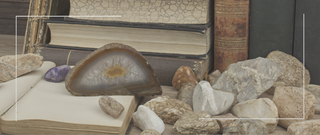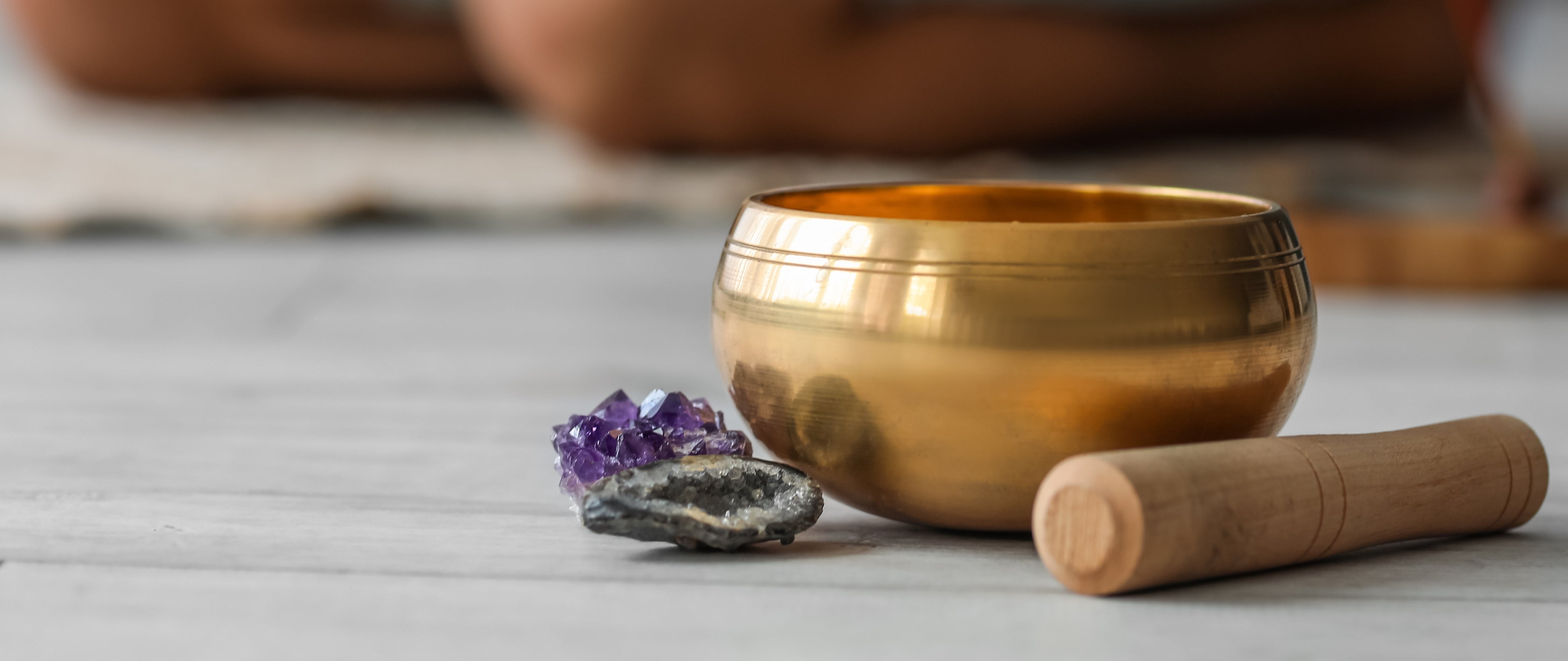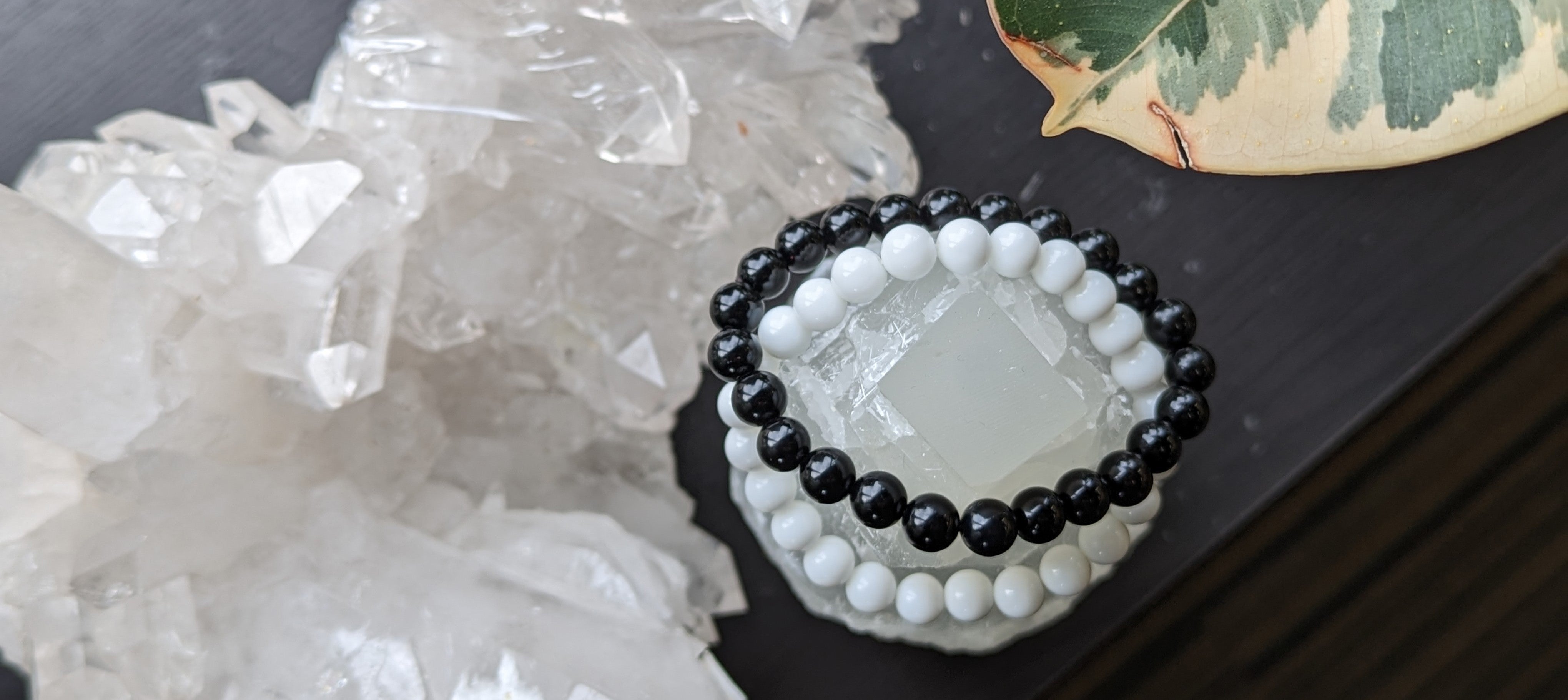New to the world of gemstones? You don't need to learn everything from the get-go and risk overwhelming yourself with a bunch of technical information. Let us help you ease your way into the subject matter with this gemology primer!
Here's the low-down of the colourful world of gemology especially for beginners: starting from gemstone definition, determining the origin of a gem, classifying gems, gemstone varieties, and more.
What Is a Gemstone?

Gemstones (or gems) are a rock, mineral, or organic material valued for their beauty, durability, and uniqueness. For thousands of years, gemstones have been cut and polished for carving and decorative purposes.
They are also used as healing tools as they're believed to carry therapeutic powers and energies. In ancient times, gems were used to symbolize status or wealth.
Today, gemstones are still widely used for ornamental, healing, and even for mechanical purposes. There's no limit to how these beauties can fit into our everyday lives, which is purely determined by our preferences and the meanings we assign to them.
Gemology is the study of gemstones, including their formations, physical properties, identification methods, and origins. It also looks into how gemstones are cut and shaped.
How Is a Gemstone's Origin Determined?

Many gem and mineral collectors put high value on a stone's provenance, associating the stone's country of origin to its quality.
Some collectors consider stones that come from historical sources as rarer and more superior than those from newer and less known sources. Consumers may not be able to tell at a glance if an emerald is from Colombia. But they may be more than willing to pay extra for an emerald that bears the Colombian label.
But is it possible to accurately identify a gemstone's source?
This may be a herculean task for rock shop owners, but not for gemological laboratories. In the ˜40s to ˜50s, Dr. Edward J. Gübelin, one of the founders of modern gemology, collected gemstones and successfully identified the geographical origin and the exact mine where they came from based on their mineral inclusions.
He did this by comparing gemstones of unknown origin with those of known origin and determining their shared characteristics. He also evaluated the degree of resemblance of gems extracted from various mining sites. Gübelin's findings are still used by labs to this day.
Gübelin highlights that a gemstone's gemological and mineralogical characteristics are influenced by the environment (during and after its growth) in which it is formed. And these pieces of information can point to its geographical or geological origin.
The factors of a gemstone's formation that can be used as indicators of its provenance are:
- The nature of the host rock
- Temperature and pressure conditions
- Interactive events between the host rock and nearby rock units (e.g., migration of fluids that are necessary/unnecessary to the formation of the gemstone)
- Nature and composition of the solutions or liquids that contributed to the growth of the crystal
Putting a finger on a gemstone's origin becomes simpler when a specimen has several properties other than its mineral inclusions.
Observable characteristics like growth structure, physical properties, and chemical composition make it easier for a gemologist to tell apart one stone from the others that were collected from the same locality (or other localities).
A set of distinguishable properties not only provides information about the origin of a gem, but also rules out other possible origins.
How Are Gemstones Classified?

There are several ways to categorize gemstones given that they have extremely diverse properties. In mineralogy, gems are classified according to their chemical composition.
The hierarchy looks like this: class > species > variety
Class
Below are the 10 distinct classes or groups of minerals along with some examples of gems and minerals:
- Class I: Pure elements - Metals, alloys, semimetals, and nonmetals (e.g., diamond)
- Class II: Sulfides - Gems with sulfur as their principal anion (e.g., pyrite, sphalerite, and rhodochrosite)
- Class III: Halides - Halogen elements like fluorine, chlorine, and bromine are anions (e.g., fluorite)
- Class IV: Oxides - Mineral compounds in which oxygen is mixed with another element (e.g., corundum, chrysoberyl, hematite, opal, spinel, and rutile)
- Class V a: Carbonates - Gems with carbonate radical (CO3) as the principal anion (e.g., azurite, calcite, aragonite, malachite, pearl, and onyx)
- Class V b: Borates - Known as salts in which the anion has both boron and oxygen (e.g., hambergite and ulexite)
- Class VI a: Tungstates - Salts in which the anion has tungsten and oxygen (e.g., scheelite and stolzite)
- Class VI b: Sulfates - Compounds consisting of sulfur, oxygen, and another mineral (e.g., barite, gypsum, and smithsonite)
- Class VII: Phosphates - A group of minerals of the salts of orthophosphoric acid, H3PO4 (e.g., apatite, turquoise, and rose quartz)
- Class VIII: Silicates - Ionic compounds with anions containing silicon and oxygen (e.g., benitoite, chrysocolla, jadeite, kyanite, morganite, peridot, and staurolite)
Species
The classes are composed of different gem species. Every species is defined by its physical structure and chemical composition.
For instance, beryl's chemical formula is Be3Al2Si6O18, meaning each beryl molecule has 3 beryllium, 2 aluminum, 6 silicon, and 18 hydrogen atoms. Add to that the mineral's crystal structure, which is hexagonal, and now you have definitive information about the beryl species.
Besides beryl, other main gem species are corundum, quartz, spinel, opal, topaz, chrysoberyl, spodumene, zoisite, tourmaline, and feldspar.
Variety
Narrowing it down further, each gemstone species has varieties. These varieties are commonly determined based on colours or optical features. And because these characteristics enhance their aesthetic appeal, gem varieties can differ in price and value.
Examples of varieties are corundum's ruby, sapphire, star ruby, and star sapphire. Quartz has amethyst, citrine, ametrine, and smoky quartz among others. Some gemstones have one or more varieties, while others don't have any at all.
What Gives a Gemstone Its Shape and Structure?

To understand how crystal shapes came to be, we must look at a crystal's internal and external structures.
Internally, the form of a mineral is defined by how its atoms are arranged. In gemology, these orderly and repeating patterns by which atoms are arranged are called crystal systems. If the atoms of a mineral follow any of these systems, that mineral is a crystal.
There are 7 crystal systems namely monoclinic, tetragonal, triclinic, orthorhombic, trigonal, isometric, and hexagonal. While most minerals arrange their atoms in one of these systems, there are also minerals that don't have a solid atomic structure. They are called amorphous or non-crystalline solids.
These minerals can take on different geometric shapes, but their atomic structure remains indefinite. Obsidian is a common example of an amorphous mineral.
Crystal structures are expressed externally through crystal habits. In other words, the habit of a mineral dictates the shape in which it occurs in nature. Although the final form of a crystal is still heavily influenced by the conditions during its growth.
Mineralogists came up with various names to describe crystal habits. These are:
- Acicular - Needle-like
- Druzy - Small crystals coating a surface
- Fibrous - Showing thread-like fibres
- Coxcomb - Closely-spaced, flaky crystals
- Tabular - Flattened or tablet-shaped
- Plumose - Feathery
- Sphenoid - Wedge-like
What Produces Colours in Gemstones?

Colour is produced when a substance in a gemstone absorbs wavelengths of light while allowing other wavelengths to interact with the substance without interference. The resulting wavelengths that penetrate the gem cause the colour that we see in the stone.
These 3 factors must be present for our eyes to perceive colour:
- Light
- Our vision
- A certain substance/element
There are 2 groups of elements contained in gemstones that are able to absorb light. These are transition metals (copper, iron, nickel, chromium, and gold) and the rare earth metals (erbium, gadolinium, and yttrium).
Also called the colouring agents, these metals can either be part of the chemical composition of the gem or as mineral inclusions/impurities.
The light wavelengths that are not absorbed by the gemstone are reflected to the viewer. And this results in the colour that our eyes see.
Other factors that can alter the colour of a gem include:
- Crystal structure
- The type of light source (e.g., daylight or fluorescent light)
- Iridescence or the play of colours in a stone
- The distance that rays of light travel to enter the stone
- The light reflected by the inclusions present in a gem (e.g., aventurescence or the glistening effect in aventurine)
Gemstone treatments and enhancements like heating, irradiation, and dyeing also change the colour of gems.
What Is Lapidary?

Lapidary is the art of the cutting, polishing, and engraving of rough gem materials to fashion them into jewelry, craft, or ornamental pieces. The term is also used to refer to someone who does lapidary art. Basic lapidary techniques are faceting, tumbling, carving, and cabbing.
Lapidary artists are skilled in fashioning gemstones (with respect to the gem's hardness value and optical properties) into specific cuts to enhance their appearance and even maximize their use.
Gem Treatments and Enhancements
Gem treatments and enhancements have been widely accepted practices for centuries. And some gemstones wouldn't have existed if not for innovations in gem treatments.
Case in point: blue and purple tanzanite stones.
Naturally occurring tanzanite has a yellowish brown hue. But when heated at 800 to 900 °F, the stone yields a violet-blue colour which is popularly used in jewelry.
Synthetic and enhanced gems can be cheaper than their natural counterparts. But in most cases, both cost just the same. In terms of quality, man-made and enhanced gems can be clearer and contain fewer inclusions since they've been refined.
Many natural gemstones are highly valued for their rarity, beauty, and exceptional durability. Gem experts create synthetic versions of these scarce stones to keep up with market demands, giving customers a wide selection to choose from based on their needs and preferences.
Gemstones that are routinely treated and enhanced are topaz, tourmaline, apatite, citrine, ruby, sapphire, and zircon.
Popular gem enhancement and treatments are:
- Heating - Subjecting a gemstone to heat to lighten, deepen, or alter its colour.
- Irradiation - Treating a gem with ionizing radiation to change its optical properties. This is done to change a gemstone's colour or to lessen its inclusions.
- Dyeing - Adding colour to a gemstone (common in non-transparent gems).
- Bleaching - Applying chemicals or other elements to lighten or boost colour consistency of a gem.
- Oiling - Filling oil or resin into the cracks or fissures in a gemstone to make them less visible.
- Coating - Coating a gem with a thin film to increase its iridescence, or to give it a lighter or stronger colour.
In the next articles, we will tackle each of the sub-topics so you can develop a deeper understanding of them.
Sources:
Geology. (2019) Geo.libretexts.org. Accessed at https://geo.libretexts.org/Bookshelves/Geology/Book%3A_Gemology
Clark, D. (n.d.). What Is a Gem? International Gem Society. Accessed at https://www.gemsociety.org/article/what-is-a-gem/
Clark, D. (n.d.). An Introduction to Lapidary Arts. International Gem Society. Accessed at https://www.gemsociety.org/article/introduction-lapidary-arts/
Clark, D. (n.d.). A Guide to Gem Classification. International Gem Society. Accessed at https://www.gemsociety.org/article/how-gems-are-classified/#Mineral_Groups_and_Gem_Classification
Cartwright, M. (2013). Does a Gemstone's Country of Origin Matter? Jewellery Business. Accessed at https://www.jewellerybusiness.com/features/does-a-gemstones-country-of-origin-matter/4/
Classifying Gemstones. (n.d.). GemSelect. Accessed athttps://www.gemselect.com/other-info/classifying-gems.php
Crystal Systems and Habits. (n.d.). Facetingbook.com. Accessed at http://www.facetingbook.com/assets/chap12.10_crystalsystems.pdf
Crystal Systems. (n.d.). Lumen. Accessed at https://courses.lumenlearning.com/cheminter/chapter/crystal-systes/
About the GIA Gem Project and the Dr. Edward J. Gübelin Gem Collection (n.d.). GIA. Accessed at https://www.gia.edu/about-gia-gem-project-gubelin-collection
What Is Lapidary? (n.d.). Lizzadro Museum of Lapidary Art. Accessed at https://lizzadromuseum.org/lapidary/





